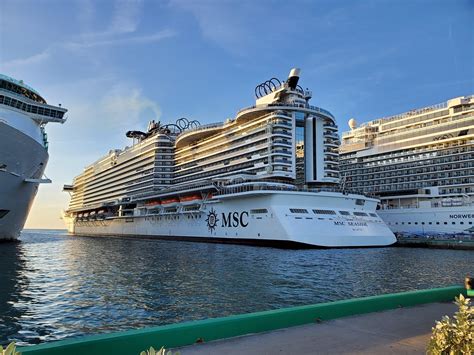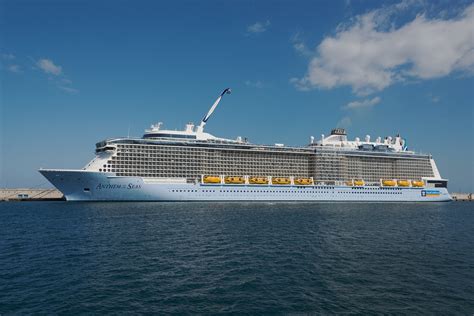Norovirus, often associated with outbreaks on cruise ships, poses significant health risks not only to passengers but also to pets. This highly contagious virus can spread rapidly in the confined environment of a ship, affecting both humans and animals. Understanding the transmission of norovirus, recognizing symptoms, and knowing preventive measures are essential for safeguarding your health and that of your pets. This article explores the risks of norovirus on cruises, how it spreads, and the importance of early detection and good hygiene. We’ll also discuss steps you can take to protect yourself and your pets, including vaccinations and precautions before embarking on your journey.
Delve into this topic with dominure.com to gain a thorough understanding.
1. Why Norovirus Is a Concern for Cruise Passengers and Pets
Norovirus is a significant concern on cruises due to its highly contagious nature and the potential for rapid transmission in the close quarters of a ship. It is known for causing gastrointestinal illness, which can lead to severe symptoms like vomiting and diarrhea in humans. While norovirus primarily affects humans, pets can also be indirectly impacted, especially if they come into contact with contaminated surfaces or through their owners. The virus can easily spread through food, water, or by touching infected surfaces, making cruise ships a particularly vulnerable environment.
For passengers, an outbreak can quickly disrupt a vacation and pose serious health risks, especially for the elderly, children, and those with weakened immune systems. For pets, while they may not exhibit symptoms directly related to norovirus, they can suffer from stress and secondary infections if their owners are incapacitated or if they come into contact with contaminated environments. The confined space of a cruise ship amplifies these risks, making it crucial for both passengers and their pets to take preventive measures to minimize the chances of infection and ensure a safe, healthy journey.

2. How Norovirus Spreads on Cruises
Norovirus spreads easily on cruise ships due to the close living quarters and shared facilities. The virus primarily spreads through the fecal-oral route, which can occur when individuals consume contaminated food or water, or touch surfaces that have been tainted with the virus and then touch their mouths. Common sources of contamination include buffet lines, communal restrooms, and public touchpoints like handrails and elevator buttons.
Infected individuals can shed the virus even before they show symptoms, making it challenging to control its spread. Furthermore, norovirus is highly resilient, capable of surviving on surfaces for extended periods, increasing the likelihood of transmission. The confined environment of a cruise ship exacerbates these risks, as passengers and crew members interact closely and share spaces. Once an outbreak begins, it can quickly affect a large number of people, making it essential for both passengers and the ship’s staff to adhere to stringent hygiene practices and promptly rep

3. What Symptoms to Watch for in Humans and Pets
In humans, norovirus typically causes acute gastroenteritis, with symptoms including nausea, vomiting, diarrhea, stomach cramps, and sometimes fever. These symptoms can appear suddenly, usually within 12 to 48 hours after exposure, and can be severe, leading to dehydration, especially in young children, the elderly, and those with weakened immune systems. While the illness usually resolves within a few days, it can be particularly debilitating, making it difficult for affected individuals to continue with normal activities.
For pets, direct symptoms of norovirus infection are not well-documented, as the virus primarily affects humans. However, pets can still be impacted indirectly. If a pet owner becomes ill and is unable to care for their pet properly, the animal may experience stress or a lack of routine care. Additionally, pets could potentially come into contact with contaminated surfaces or materials. It’s important for pet owners to monitor their animals for any signs of distress or unusual behavior and maintain a clean environment to reduce the risk of secondary health issues.

4. Why Early Detection and Isolation Are Crucial
Early detection and isolation of norovirus cases are vital in preventing widespread outbreaks, especially in the confined environment of a cruise ship. As norovirus is highly contagious and can spread rapidly through close contact and contaminated surfaces, identifying symptoms early allows for swift action to contain the virus. When individuals recognize symptoms such as nausea, vomiting, and diarrhea, they can report their condition to the ship’s medical staff immediately. This prompt reporting enables the medical team to isolate the affected individuals, minimizing their interaction with others and reducing the risk of transmission.
Isolation of symptomatic individuals is crucial because norovirus can be contagious even before symptoms appear and for several days afterward. This precaution helps protect other passengers and crew members, including vulnerable populations such as the elderly and those with compromised immune systems, who may be more severely affected by the virus. Additionally, isolation helps prevent pets from being exposed to contaminated areas, reducing the risk of secondary infections or stress-related health issues. By implementing strict isolation protocols and maintaining good hygiene, the spread of norovirus can be effectively controlled, ensuring a safer environment for everyone on board.

5. How to Practice Good Hygiene on Cruises
Practicing good hygiene on cruises is essential to prevent the spread of norovirus. Passengers should frequently wash their hands with soap and water, especially before eating, after using the restroom, and after touching common surfaces like handrails and elevator buttons. Hand sanitizers with at least 60% alcohol can be a useful supplement, but they should not replace hand washing, as they are less effective against norovirus.
Avoiding direct contact with communal food items is also important. Use utensils provided at buffet stations and refrain from touching food with bare hands. It is advisable to eat only properly cooked and prepared food and to drink bottled or treated water. Passengers should also clean and disinfect frequently-touched surfaces in their cabins, such as doorknobs, light switches, and remote controls, using disinfectant wipes.
For pet owners, maintaining cleanliness around pet feeding and sleeping areas is crucial. Wash your hands after handling pet items, and ensure that your pets are not exposed to contaminated surfaces. These hygiene practices help protect both passengers and pets, reducing the risk of illness on board.

6. What to Do If You or Your Pet Shows Symptoms
If you or your pet shows symptoms of norovirus, such as nausea, vomiting, diarrhea, or stomach cramps, it is crucial to act quickly to prevent further spread. First, immediately isolate yourself and your pet from others to minimize contact. This means staying in your cabin and avoiding common areas on the ship. Notify the ship’s medical staff as soon as possible so they can provide appropriate care and guidance.
For humans, staying hydrated is essential, as norovirus can lead to severe dehydration. Drink plenty of fluids, such as water or oral rehydration solutions, and rest as much as possible. Follow the medical staff’s instructions regarding medication and care.
For pets, while they are unlikely to be directly affected by norovirus, they may experience stress if their owner is ill. Ensure your pet continues to receive food, water, and comfort, and maintain their regular routine as much as possible. Clean and disinfect any areas your pet frequents to prevent the spread of secondary infections. If your pet exhibits unusual behavior or symptoms, consult a veterinarian for further advice.

7. Why Prevention Is Key: Vaccinations and Precautions
Prevention is crucial in managing the risk of norovirus on cruises due to its high contagion potential and the challenging conditions of a ship environment. While there is no vaccine specifically for norovirus, adopting preventive measures can significantly reduce the risk of infection.
Maintaining rigorous hygiene practices is one of the most effective ways to prevent norovirus. Frequent hand washing with soap and water, especially before meals and after using the restroom, is essential. Using hand sanitizers can help but should not replace proper hand washing. Passengers should also avoid touching their face, particularly the mouth, after coming into contact with potentially contaminated surfaces.
For those traveling with pets, ensuring that their areas are kept clean and sanitized can prevent indirect exposure to contaminants. While pets themselves are not directly infected by norovirus, maintaining a clean environment helps reduce the risk of secondary infections or health issues.
Additionally, it is wise to be cautious with food and water sources. Eating only well-cooked food, avoiding raw shellfish, and drinking bottled or properly treated water can prevent the ingestion of the virus. By following these preventive measures, passengers and their pets can better protect themselves from the risk of norovirus and enjoy a safer, healthier cruise experience.

8. How to Prepare for a Cruise with Your Pet
Preparing for a cruise with your pet involves several important steps to ensure their health and safety, particularly in light of potential risks like norovirus. Begin by confirming that the cruise line permits pets and understand their specific requirements, including any necessary vaccinations or health documentation. Ensure your pet is up-to-date on vaccinations and has a clean bill of health from a veterinarian.
Pack essential supplies for your pet, including food, water, medications, and comfort items. Bring cleaning supplies to maintain a hygienic environment in your cabin, such as disinfectant wipes and a pet-friendly cleaner. Also, consider packing a travel water bowl and portable food containers.
Before departure, familiarize yourself with the ship’s procedures for handling illnesses, both for humans and pets. Ensure that your pet is microchipped or has a secure ID tag in case of separation. Lastly, maintain regular hygiene practices and monitor your pet closely for any signs of stress or illness during the trip. By taking these precautions, you can help ensure a smooth and enjoyable crui

Preparing for a cruise with your pet involves several important steps to ensure their health and safety, particularly in light of potential risks like norovirus. Begin by confirming that the cruise line permits pets and understand their specific requirements, including any necessary vaccinations or health documentation. Ensure your pet is up-to-date on vaccinations and has a clean bill of health from a veterinarian.
Pack essential supplies for your pet, including food, water, medications, and comfort items. Bring cleaning supplies to maintain a hygienic environment in your cabin, such as disinfectant wipes and a pet-friendly cleaner. Also, consider packing a travel water bowl and portable food containers.
Before departure, familiarize yourself with the ship’s procedures for handling illnesses, both for humans and pets. Ensure that your pet is microchipped or has a secure ID tag in case of separation. Lastly, maintain regular hygiene practices and monitor your pet closely for any signs of stress or illness during the trip. By taking these precautions, you can help ensure a smooth and enjoyable cruise experience for both you and your pet.
dominure.com

